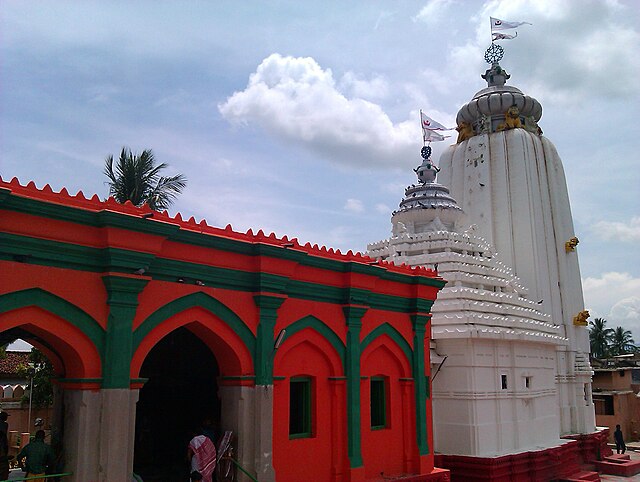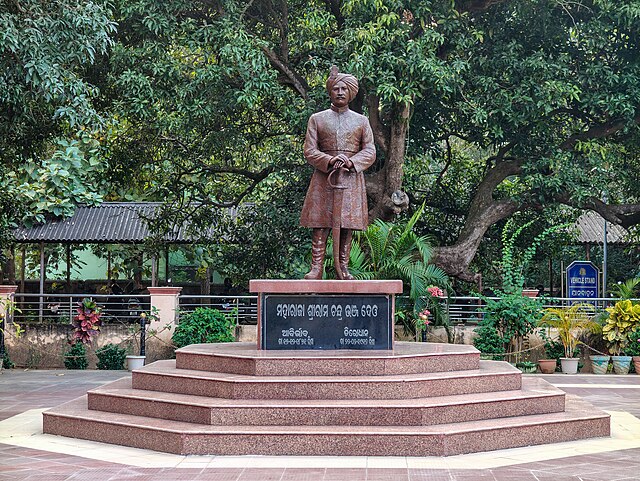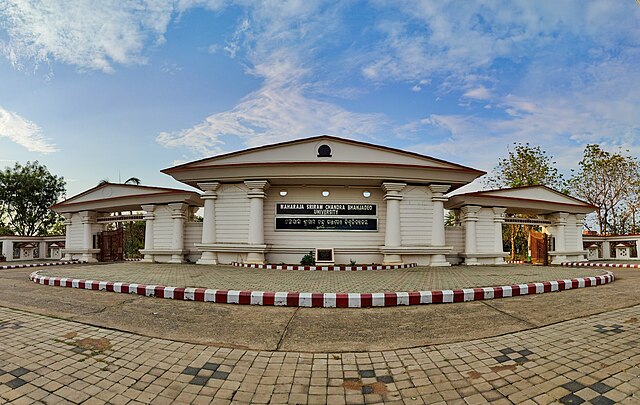Nestled in the northern part of Odisha, Baripada stands as a testament to India’s rich cultural tapestry and historical grandeur. This charming city, serving as the headquarters of Mayurbhanj district, offers visitors an authentic glimpse into traditional Odia culture while embracing modern development. But what exactly makes this city so special, and why should it be on every culture enthusiast’s travel list?
What Makes Baripada Special?
Geographic Location and Significance
Baripada occupies a strategic position in northern Odisha, approximately 270 kilometers from the state capital, Bhubaneswar. The city sits comfortably at an elevation that provides it with a pleasant climate throughout most of the year. Its location makes it a perfect gateway to explore the broader Mayurbhanj region, including the famous Simlipal National Park.
The city’s geographic positioning has historically made it a crucial trade route connecting Odisha with West Bengal and Jharkhand. This strategic location has contributed significantly to its cultural diversity and economic importance over the centuries.
Historical Importance
You might wonder why Baripada holds such historical significance. The answer lies in its role as the former capital of the princely state of Mayurbhanj. This royal heritage has left an indelible mark on the city’s architecture, culture, and traditions. The influence of the Bhanja dynasty can still be felt today through various monuments, palaces, and cultural practices that have been preserved over generations.
A Journey Through Baripada’s Rich History
Ancient Origins and Royal Heritage
The history of Baripada is intrinsically linked with the Bhanja dynasty, which ruled the region for over a millennium. The Bhanjas were known for their patronage of arts, culture, and architecture. They established Baripada as their capital and transformed it into a center of learning and cultural excellence.
Archaeological evidence suggests that the region has been inhabited since ancient times, with various dynasties leaving their mark on the local culture. The Bhanjas, however, had the most lasting impact, establishing traditions that continue to thrive today.
Colonial Era Influences
During the British colonial period, Mayurbhanj maintained its status as a princely state, which allowed it to preserve much of its traditional culture and administrative systems. This unique position meant that Baripada experienced a different colonial experience compared to directly administered British territories.
The colonial period brought infrastructure development, including railways and roads, which connected Baripada to other parts of India. This connectivity played a crucial role in the city’s economic and cultural exchange with neighboring regions.
Post-Independence Development
After India’s independence in 1947, Mayurbhanj merged with Odisha, and Baripada continued to serve as the district headquarters. The city underwent significant modernization while carefully preserving its cultural heritage. Educational institutions were established, healthcare facilities were improved, and industrial development was encouraged.
Cultural Treasures of Baripada

Traditional Arts and Crafts
Baripada is renowned for its vibrant artistic traditions that have been passed down through generations. The city serves as a hub for various traditional art forms that are integral to Odia culture.
Chhau Dance: The Crown Jewel
When discussing Baripada’s cultural contributions, one cannot overlook the magnificent Chhau dance. This traditional martial dance form, recognized by UNESCO as an Intangible Cultural Heritage of Humanity, finds one of its most authentic expressions in the Mayurbhanj region.
The Mayurbhanj Chhau, as it’s specifically known, is unique because it’s performed without masks, unlike other regional variations. The dancers rely entirely on their facial expressions, body movements, and rhythmic footwork to tell stories from Hindu epics and puranas. The annual Chhau festival in Baripada attracts performers and enthusiasts from across the country.
Local Handicrafts and Textiles
The skilled artisans of Baripada create exquisite handicrafts that reflect the region’s artistic heritage. Traditional textiles, particularly the handwoven fabrics, showcase intricate designs and vibrant colors. Local craftsmen also excel in creating decorative items using natural materials like bamboo, wood, and metal.
Festivals and Celebrations
Baripada comes alive during various festivals throughout the year. The city’s festival calendar is packed with religious celebrations, cultural events, and seasonal festivities. Dussehra celebrations are particularly grand, featuring elaborate processions and cultural performances. The Chhau Parva, dedicated to the traditional dance form, is another major attraction that draws visitors from far and wide.
Must-Visit Attractions in Baripada
Mayurbhanj Palace
The Mayurbhanj Palace stands as a magnificent reminder of the region’s royal past. This architectural marvel showcases a blend of traditional Odia and colonial architectural styles. The palace complex includes beautiful gardens, ornate halls, and historical artifacts that tell the story of the Bhanja dynasty’s grandeur.
Visitors can explore the various sections of the palace, each offering insights into royal life and administrative systems of bygone eras. The palace museum houses a remarkable collection of royal artifacts, weapons, paintings, and manuscripts.
Belgadia Palace
Another architectural gem, Belgadia Palace, represents the winter residence of the royal family. This palace is known for its unique architectural features and historical significance. The structure beautifully combines functionality with aesthetic appeal, featuring spacious rooms, beautiful courtyards, and intricate decorative elements.
Local Temples and Religious Sites
Baripada is home to numerous temples that reflect the deep spiritual traditions of the region. These sacred sites not only serve as places of worship but also as repositories of art, architecture, and cultural practices. Each temple has its own unique story and architectural style, contributing to the city’s spiritual landscape.
Natural Beauty and Wildlife
Simlipal National Park Connection
One of Baripada’s greatest assets is its proximity to Simlipal National Park, one of India’s most beautiful biosphere reserves. This connection makes Baripada an ideal base for wildlife enthusiasts and nature lovers. The park is home to tigers, elephants, and numerous other species, offering incredible opportunities for wildlife viewing and nature photography.
The national park also features stunning waterfalls, including the famous Barehipani and Joranda falls, which are among the highest waterfalls in India. The lush green forests and diverse ecosystems make it a paradise for eco-tourists.
Scenic Landscapes
The landscape around Baripada is characterized by rolling hills, dense forests, and meandering rivers. This natural beauty provides excellent opportunities for trekking, nature walks, and photography. The changing seasons bring different colors and moods to the landscape, making each visit a unique experience.
Local Cuisine and Culinary Delights
Traditional Odia Dishes
The culinary scene in Baripada offers an authentic taste of traditional Odia cuisine. Local dishes are prepared using fresh, locally sourced ingredients and traditional cooking methods. Rice forms the staple, accompanied by various dal preparations, vegetable curries, and fish dishes.
Some must-try local specialties include Pakhala (fermented rice), Dalma (lentil and vegetable curry), and various preparations of local freshwater fish. The use of minimal spices allows the natural flavors of ingredients to shine through.
Street Food Culture
The streets of Baripada offer a delightful array of local snacks and street food. From crispy pakoras during monsoon season to sweet treats during festivals, the street food scene reflects the city’s vibrant culture. Local vendors serve traditional snacks that have been popular for generations, providing an authentic taste of local flavors.
Economy and Modern Development
Agriculture and Local Industries
Agriculture remains the backbone of Baripada’s economy, with rice being the primary crop. The fertile land and favorable climate support the cultivation of various crops throughout the year. In recent years, there has been a push toward diversification, with farmers exploring cash crops and horticulture.
Small-scale industries, particularly those related to handloom weaving and handicrafts, provide employment opportunities for local artisans. The government has implemented various schemes to support traditional crafts and promote their marketing at national and international levels.
Educational Institutions
Baripada has emerged as an important educational center in northern Odisha. The city houses several colleges and educational institutions that cater to students from the surrounding regions. Maharaja Sriram Chandra Bhanja Deo University, established here, has significantly contributed to higher education in the region.
Transportation and Connectivity
How to Reach Baripada
Reaching Baripada is relatively convenient, with multiple transportation options available. The city is well-connected by road to major cities in Odisha and neighboring states. Regular bus services operate from Bhubaneswar, Cuttack, and other major centers.
The nearest railway station is Baripada Road, which connects the city to the Indian railway network. For air travelers, the nearest airport is in Bhubaneswar, from where one can take surface transport to reach Baripada.
Local Transportation
Within the city, various modes of local transportation are available, including auto-rickshaws, cycle-rickshaws, and local buses. For exploring nearby attractions, hired taxis and private vehicles are popular options. The compact nature of the city makes it quite walkable for most local sightseeing.
Best Time to Visit Baripada

Weather Patterns
The climate in Baripada is generally pleasant, with three distinct seasons. Winters (November to February) offer the most comfortable weather for sightseeing, with cool and dry conditions. Summers can be quite warm, while monsoons bring heavy rainfall that rejuvenates the natural landscape.
Festival Seasons
If you’re interested in experiencing the city’s cultural vibrancy, planning your visit during festival seasons is highly recommended. The Chhau festival, usually held in spring, offers an exceptional cultural experience. Dussehra celebrations in autumn are equally spectacular and provide insights into local traditions.
Accommodation Options
Baripada offers various accommodation options to suit different budgets and preferences. From budget guesthouses to mid-range hotels, visitors can find suitable lodging. Some heritage properties have been converted into hotels, offering a unique opportunity to experience royal hospitality.
For those seeking a more immersive experience, homestays with local families provide authentic insights into daily life and local culture. These options often include home-cooked meals and personalized guidance for local sightseeing.
Shopping and Local Markets
The local markets of Baripada offer excellent opportunities to purchase authentic handicrafts, textiles, and souvenirs. The main market areas buzz with activity, especially during festival seasons. Visitors can find traditional handwoven textiles, bamboo crafts, and other locally made products that make perfect souvenirs.
Bargaining is common and expected in local markets, making the shopping experience both economical and entertaining. The markets also offer fresh local produce, spices, and traditional sweets that reflect the region’s culinary heritage.
Future Prospects and Development
Baripada is poised for significant growth and development while maintaining its cultural identity. Government initiatives focus on promoting tourism, supporting traditional crafts, and improving infrastructure. The city’s proximity to natural attractions like Simlipal National Park positions it well for eco-tourism development.
Educational institutions are expanding, and there are plans to establish more industries that can provide employment opportunities for the local population. The challenge lies in balancing modern development with heritage conservation, a task that local authorities are approaching thoughtfully.
Conclusion
Baripada represents the perfect blend of historical grandeur, cultural richness, and natural beauty. This enchanting city offers visitors an authentic experience of traditional Odia culture while providing modern amenities and conveniences. From the mesmerizing Chhau dance performances to the architectural marvels of royal palaces, from the spiritual atmosphere of ancient temples to the thrilling wildlife experiences at nearby Simlipal, Baripada has something special for every type of traveler.
The city’s commitment to preserving its cultural heritage while embracing progress makes it a model for sustainable tourism development. Whether you’re a history enthusiast, culture lover, nature photographer, or simply someone seeking an authentic Indian experience, Baripada welcomes you with open arms and promises memories that will last a lifetime.
Frequently Asked Questions
1. What is the best time to visit Baripada for cultural experiences?
The best time to visit Baripada for cultural experiences is during the winter months (November to February) when the weather is pleasant, and during festival seasons, particularly during the Chhau festival in spring and Dussehra celebrations in autumn.
2. How far is Simlipal National Park from Baripada, and can it be visited as a day trip?
Simlipal National Park is approximately 60 kilometers from Baripada. While it can be visited as a day trip, staying overnight near the park is recommended to fully explore its wildlife and natural attractions.
3. Are there any special permits required to visit Baripada or nearby attractions?
No special permits are required to visit Baripada itself. However, visiting Simlipal National Park requires entry permits, which can be obtained from the forest department or authorized tour operators.
4. What are the main shopping items tourists should look for in Baripada?
Tourists should look for traditional handwoven textiles, Chhau dance masks and costumes, bamboo handicrafts, traditional jewelry, and local spices. These items represent authentic local craftsmanship and make excellent souvenirs.
5. Is Baripada suitable for family trips with children?
Yes, Baripada is very suitable for family trips with children. The city offers safe environments, cultural learning opportunities, wildlife experiences at nearby Simlipal, and various recreational activities that can engage visitors of all ages.

